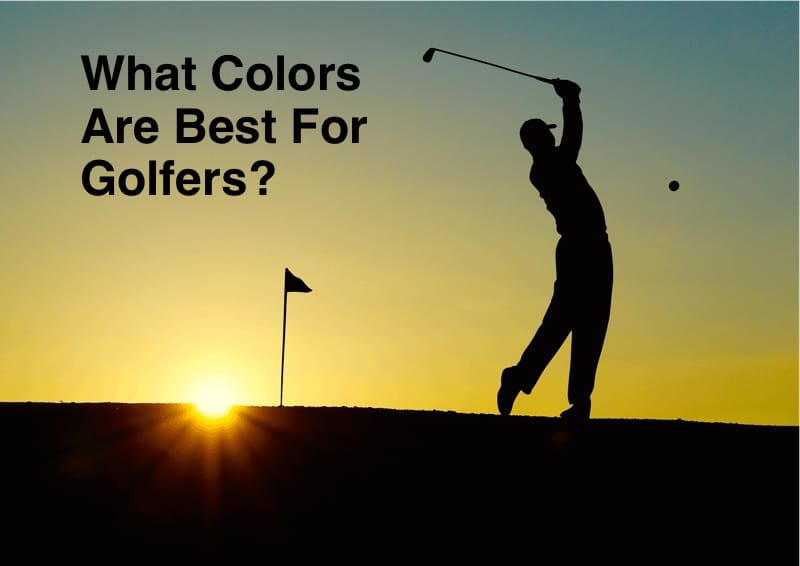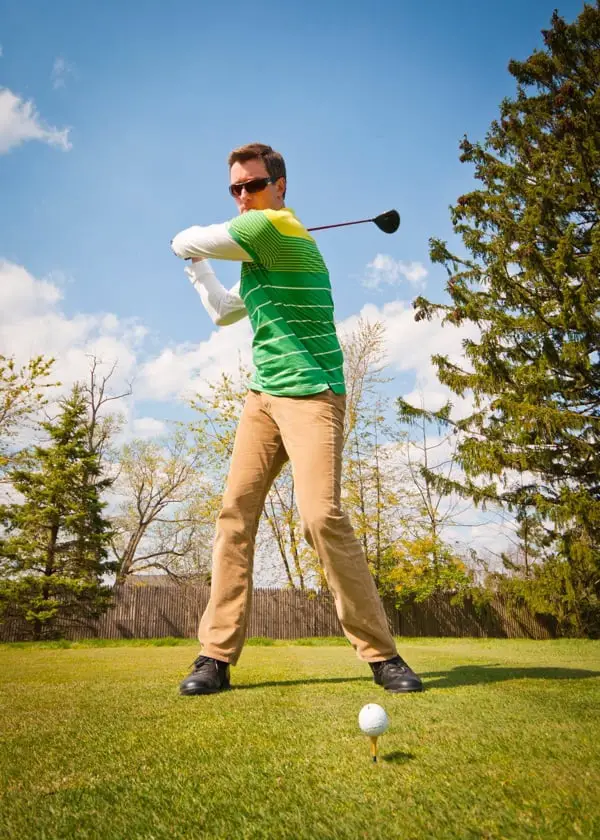Progressive glasses for golfers have three things in common.
- They give you excellent Vision with a wide field of view (curved lenses)
- You get the highest possible contrast to see the ball clearly (special colors)
- You get a golf-specific progressive lens design that fits your needs on the green
Our two recommendations are the Shamir Golf lens and the Oakley Prizm Technology with the golf-specific design. Those lenses have special design tweaks to provide you a wide distance zone, a stable mid-range zone to use when putting, and a nice and clear reading zone.
The lenses most people choose in our shop are the Shamir golf progressive lenses. They take things like your height into calculations which other progressive lenses can not do. Of course, your height is important because you need to be able to see the ball clearly in proper head and body position.
Otherwise, your vision will be compromised. And that is important to know because normal progressive lenses are way more flattened and cannot give you the wide angles you need while golfing. And certainly not the great contrast with the tint that presents you details you did not notice before. Also, your peripheral vision will be enhanced which is crucial when you are lining up to take the swing.
Choose your frame wisely. Unlike your normal progressive lenses, peripheral vision plays a really big role in golf. The only frames that deliver this kind of optics with a really wide field of view are found in sports glasses. For example frames like the Oakley Flak Jacket 2.0 delivers you those very curved lenses.
I highly recommend you check out the XL Version of it if the lens does not touch your cheeks. The reason is we need a minimum height to fit the progressive lenses of 19mm from the bottom of the lens to the point you are looking through your progressive lenses in the distance on the green. And in most cases, the smaller version does not deliver enough height.
So don´t just get any frame somewhere. Go to a specialist and buy the whole progressive glasses for golf out of one hand so you don´t need to consider that technical stuff.
Recommended Colors for Golfers with Progressive Lenses
- Prizm Golf by Oakley
- Prizm Dark Golf (for more sensitive eyes) by Oakley
- Transitions Power Purple (Photochromatic Lens)
- Transitions Thunder Brown (Photochromatic Lens)
- Transitions Fire Brown (Photochromatic Lens)
Prizm golf and Prizm dark golf lenses make it easier to find the details on the green by amplifying the contrast. This doesn´t only make the lenses darker it still lets so much brightness into your eyes. No matter if it´s cloudy or totally shiny you can just follow the ball. The tint really is not that dark.
The performance colors from Transitions are all photochromic lenses. That means your progressive lenses turn darker in bright sunlight and the tint is lighter when sunshine is not as bright. Those mentioned colors are specially made for golfers. Even if you are in the room and no direct sunlight shines on your glasses they have a mild tint in them.

Are Progressive Lenses Good for Golf?
Most normal progressive lenses are not made for golfing. They will minimize your peripheral vision, could alter your body position for the worse and you will not have any of the contrast enhancement many people like about more specialized lenses for golfing.
However, this is true for the normal progressive lens. And special lens designs like the Shamir golf consider parameters other lenses just don´t do. Like how tall you are. In golf, you have special needs and a normal progressive lens is not made to fit those needs. That is why special lenses should come into play in special situations like while playing golf.
Changes in lens design can mean you need to hold the scorecard a little bit more away compared to your everyday progressive lenses. But with these, you can read and you can play. That does not mean every golf lens will definitely fit 100% of the people all the time. That just is not the case. If the progressive zones still nerve you out after a few training sessions you should just return them.
On the one hand, you can get good equipment which gives you the opportunity to focus on all the relevant distances as you play. On the other hand, if single vision lenses or no prescription lenses at all are your way to go it could happen you need to pick up your reading glasses every time to fill in your scorecard. But you will never know if you did not test it out if it worked out just fine for you.

The influences of progressive lenses on your golf game were also examined in a study by George K. Hung, Ph.D. et al. They tested the effect of wearing single-vision &progressive lenses on eye & head movements during the golf putting stroke. In this study, newer softer, and older harder progressive lens designs were compared against single vision lenses. None of them were specially made for golfers!
This study investigated the effects of different progressive lenses and a single-vision lens on the eye, head, and putter motions during the golf putting stroke in presbyopes. Six subjects ranging in age from 49 to 69 years, with golf experience ranging from modest to high, participated in the study. Three lens conditions were tested: single-vision distance lenses (SV), newer “soft” design (PAL1), and older “hard” design (PAL2) progressive lenses. The two progressive lenses have different intermediate zone widths.
Abstract of EFFECT OF WEARING SINGLE-VISION & PROGRESSIVE LENSES ON EYE & HEAD MOVEMENTS DURING THE GOLF PUTTING STROKE
For each condition, the subject completed 15 putts to a standard size golf-hole target 9 feet away. Eye, head, and putter movements were recorded. The data were analyzed over the interval from the beginning of the putting stroke to the moment of ball impact. The root mean square (RMS) of the eye, head, and putter movements within this time interval were calculated for each record, and the data were averaged across subjects. Putting accuracy was also monitored. The results showed that the mean RMS values of the eye movements were not significantly different among the three conditions, although it was slightly smaller for the PAL2 condition.
The mean head movement RMS values were not significantly different between the SV and PAL1 conditions, whereas it was significantly higher for the PAL2 than the PAL1 condition. In addition, putt amplitude, duration, and accuracy were not significantly different among the three conditions. There were no obvious differences between experienced and inexperienced golfers. For the PAL2 condition, the larger head movements observed (and the corresponding smaller eye movement variation) may be due to its smaller intermediate zone width.
Progressive addition lens users have been previously observed to remain well within the boundaries of the intermediate zone of clarity, possibly by adopting a conservative eye movement strategy, and therefore are forced to compensate with larger head movements. The results provide new and useful guidelines for the future design of progressive lenses to improve their performance during outdoor activities such as golf.
This publication was published in 2006. The findings are still relevant today. But what you can have now is the future design of progressive lenses to improve performance in your golf game.
Are Transition Lenses Good for Golf?
Yes, there is a special selection of colors that are manufactured for golfers. The performance colors, power purple, fire brown, and thunder brown. All of them are already tinted without the need for sunlight.
But as you go on the green and bright sunlight hits the lenses they will turn darker. Those special Transition colors are not meant to be for other purposes than golfing because they could change your color perception. But this is how strong your contrasts will be. Details really pop into your eyes. It is really easy to hold the concentration on the ball even if the conditions for contrast are not ideal.
But before you buy just some color, remember I just recommend the performance colors for playing golf. There are a lot of other colors available but they won´t give you the same experience you need.
As always it was a pleasure to write about progressive lenses this time for golfers specifically.
I wish you an awesome day.
Best regards
Michael Penczek
